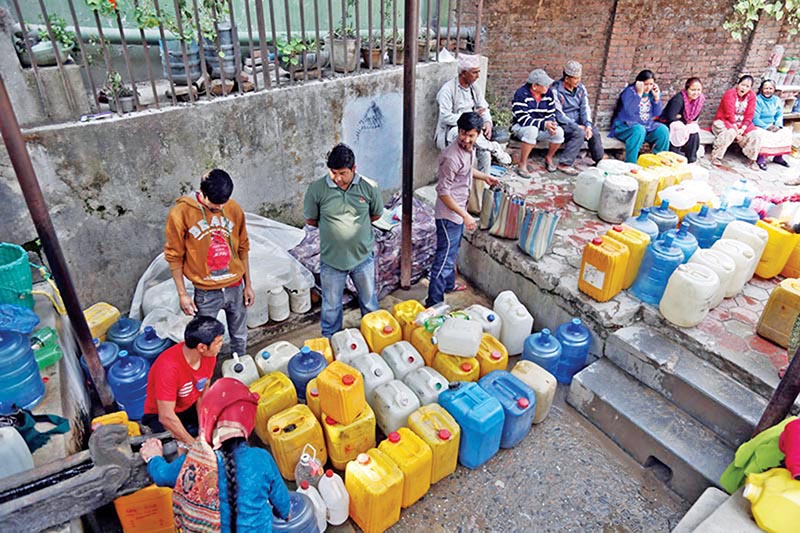Right to safe drinking water
The scarcity of water in the Valley is a year round problem but the stark reality of shortage of clean drinking water sinks in deep during the dry season
Kathmandu
Right to safe drinking water is essential to the realisation of all human rights and this despite being the most basic necessity is still in accessible to people residing in the Valley. The scarcity of water in the Valley is a year round problem for most but the stark reality of shortage of clean drinking water sinks in deep during the dry season. Most Valley dwellers wait for a week to get water supply in their taps or depend on deep wells or buy drinking water shelling out exorbitant amount of money to meet their water needs.
With the rise in population in the Valley water scarcity has inevitably taken an ugly turn. Central Bureau of Statistics shows that Nepal has the population growth rate of 1.35 per cent per annum and Kathmandu accounts for the highest growth rate of 4.78 per cent. According to Shekhar Chandra KC, Information Officer at Department of Water Supply and Sewerage (DWSS), the average per capita consumption of water was 35 litres per day earlier but it has increased to 50-100 litres in rural areas and 100-135 litres in urban cities.
It is ironic to say that water scarcity is one of the biggest problems in Nepal, despite being the second richest country in water resources in the world. Rapid and unplanned urbanisation, lack of protection of water resources, adverse climate change, poor governance, lack of commitment and coordination between governing authorities, delayed drinking water projects, poor management system et cetera are key reasons for the current water crisis in Nepal.
Water supply in the Valley
According to Dr Mahesh Prasad Bhattarai, General Manager at Kathmandu Upatyaka Khanepani Limited (KUKL) the current average demand of water in the Valley is 400 million litres per day. KUKL supplies only 120 million litres water per day and it shrinks to 100 million litres during the dry season.
KC states, “Ministry of Water Supply and Sanitation and DWSS has initiated ‘one house one tap’ project to solve the water problem in sustainable way since last year. We conduct three to four Water Safety Plans in each district and our target is to provide access to water for all by 2030. For this, we also need Drinking Water Act because currently there are no specific laws for the management of drinking water in Nepal. We still rely on Water Resources Act 1992 to exercise our right to clean water.”
Rajendra Aryal, Chairman of Federation of Drinking Water and Sanitation Users Nepal, also agrees on the need of Drinking Water Act and says that access to water is the right of people and there is a necessity to develop people-based policy.


